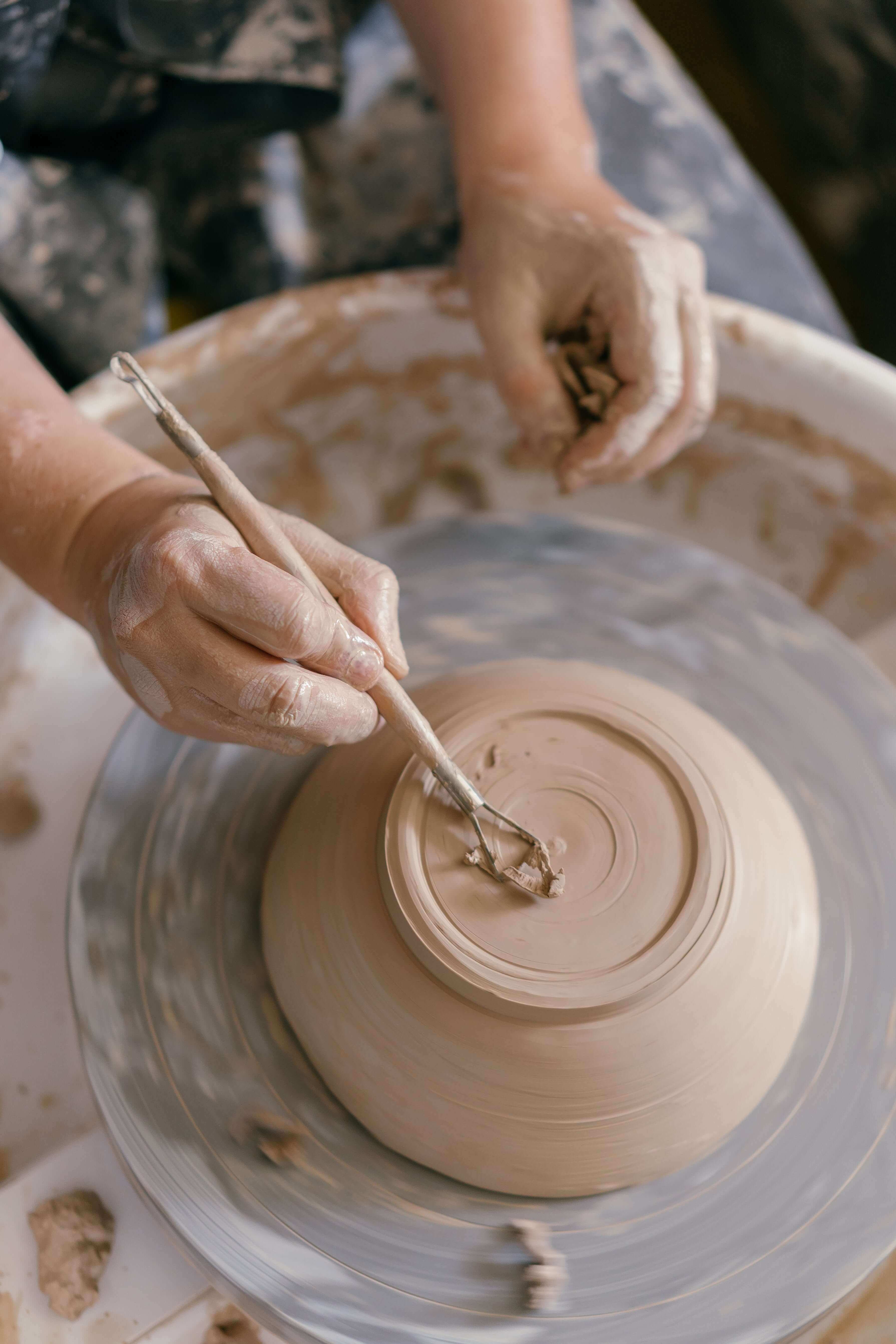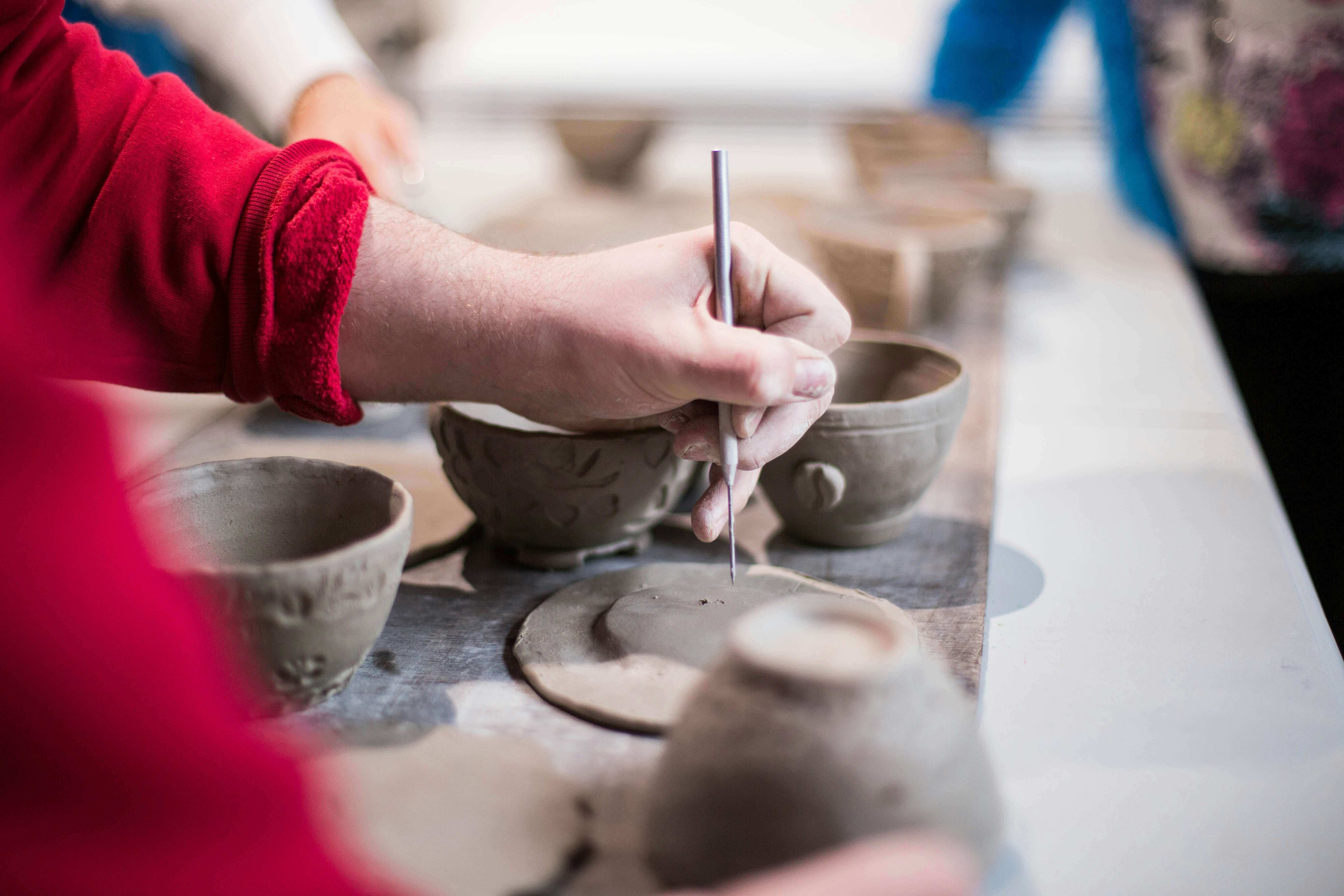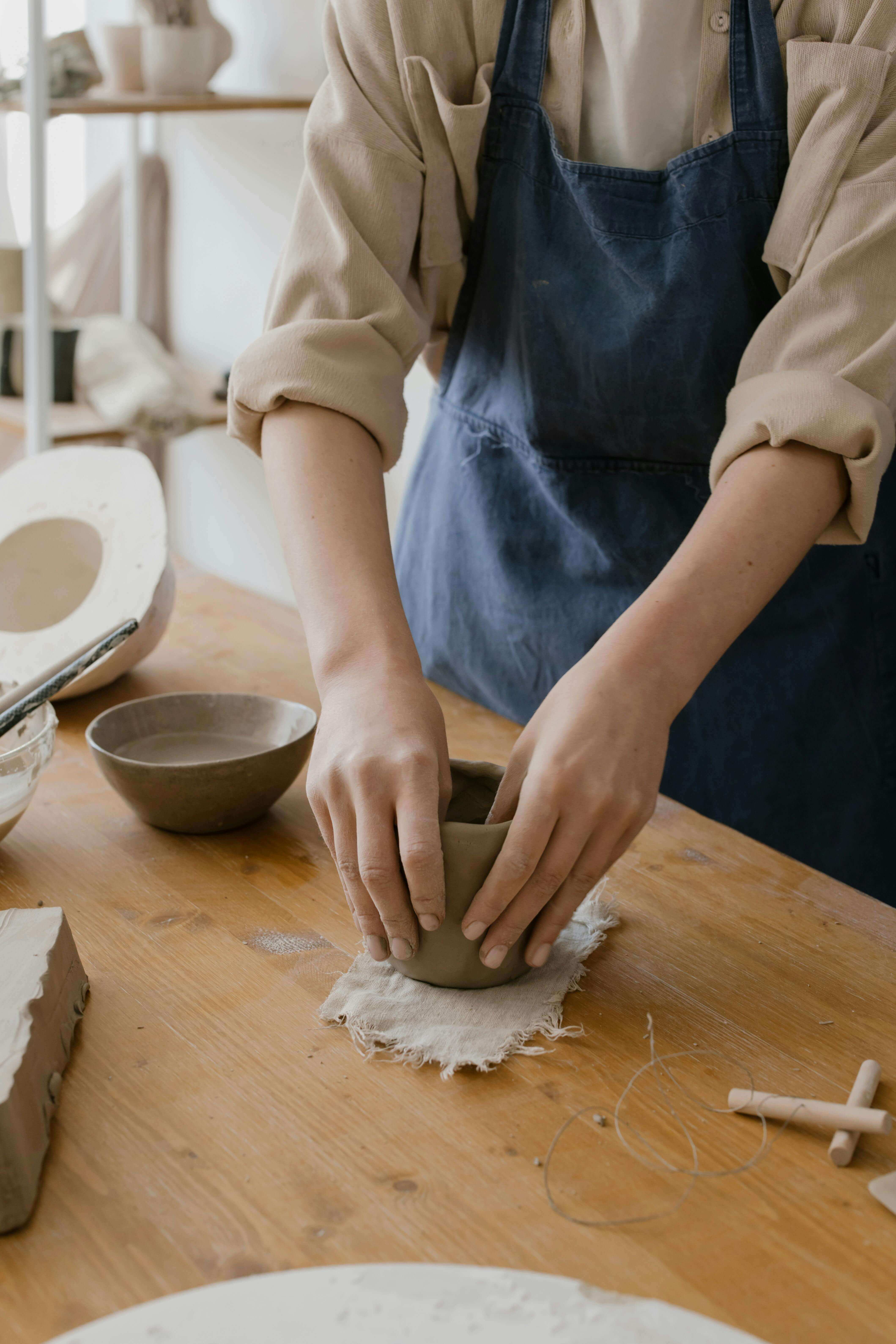Pottery, deeply rooted in ancient civilizations, has evolved to captivate both hobbyists and professionals alike. As a hobby, it serves as a creative outlet, where the act of molding clay with pottery tools becomes a meditative and satisfying experience. It allows individuals to express themselves through unique creations, ranging from simple pots to intricate pieces, all made possible by the skilled use of essential pottery tools, free from the constraints of commercial demands.
On the professional front, pottery encompasses a broad spectrum of career opportunities, including artisanal pottery production, ceramic design, teaching, and therapeutic practices. Professionals often develop a signature style, made distinguishable through their mastery of pottery tools, contributing to the evolution of the art form and enriching our cultural heritage. Pursuing pottery as a career demands not only a profound understanding of the craft and its tools but also a commitment to continual learning and navigating the complexities of the art world.
Therefore, pottery offers a rewarding journey, whether pursued as a hobby or a profession. The path one takes hinges on personal aspirations, the level of commitment, and the role one seeks to fulfill in life. This blog is designed to guide beginners on their pottery journey, providing them with the knowledge and understanding of pottery tools needed to start, explore creativity, refine their skills, and perhaps even carve out a professional niche in the vast landscape of pottery.

Getting to Know Your Pottery Tools
In the world of pottery, each tool is key to turning clay into art. Basic tools, the unsung heroes of ceramics, are each crafted for specific tasks in clay manipulation, shaping, and finishing. These tools are vital from the initial clay wedging to the final pre-firing touches.
- Wedging Tools make the clay pliable and remove air bubbles.
- Cutting Tools, like wire clay cutters, allow for precise cuts, removing excess or slicing clay blocks.
- Shaping Tools, such as ribs and scrapers, aid in smoothing, compressing, and shaping, affecting the form and texture.
- Detailing Tools, including needle and loop tools, add intricate details, capturing the artist’s vision in every feature.
- Finishing Tools, like sponges and brushes, are essential for the final smooth and surface prep before kiln firing.
Learning each tool’s function and use is essential for pottery mastery. As you grow more skilled, you’ll learn to extend or combine their uses for unique effects and finishes, boosting your creativity and pottery skills.
Essential Pottery Tools for Beginners
Clay Cutters
Clay cutters, essential for potters, range from simple wire tools to sophisticated versions. They cut large clay blocks into manageable pieces or trim excess material. A cutter has a sturdy wire between two handles for clean, precise cuts with little distortion.
Wire clay cutters also remove finished pieces from the wheel or slice through wet clay easily. Made of stainless steel or nylon, the wire cuts smoothly without sticking, separating pottery from bases damage-free.

Needle Tools
Utility and Precision: Needle tools, much like the pottery world’s pencils, provide unmatched precision for scoring, trimming, and adding detail. Equipped with a sharp, metal needle affixed to a wooden or metal handle, they’re crucial for piercing, creating small openings, or etching fine details into clay. Additionally, needle tools are invaluable for eliminating air bubbles and scoring clay before joining pieces.
Loop and Ribbon Tools
For Trimming and Carving: Essential in removing excess clay and crafting intricate designs, loop and ribbon tools are key. Loop tools, with their looped metal ends, excel in scooping out clay. Ribbon tools, featuring thin, flat metal ends, are ideal for delicate subtractive work and texture creation. Both types are vital for hollowing out pottery, refining shapes, and adding decorative touches.
Sponges
Hydration and Smoothing: Sponges play a pivotal role in pottery, from wetting clay on the wheel to smoothing surfaces and cleaning up slip. Whether natural or synthetic, they adjust water content during shaping, aiding in consistency and finish. The gentle touch of a sponge is perfect for achieving a smooth surface before the final firing.
Scrappers and Ribs
Shaping and Smoothing Tools: Scrapers and ribs, while sometimes used interchangeably, serve distinct purposes for shaping and smoothing clay. Scrapers primarily remove excess clay and smooth surfaces. Ribs, offering more flexibility, are tailored for specific tasks like creating curves and contours. Both are crucial for refining the shape and surface of your pieces, enhancing the overall quality and finish.
Pottery Wheels
Essential for Symmetry and Precision: The pottery wheel stands as a fundamental tool for numerous potters, enabling the crafting of symmetrical and rounded pieces. Available in manual or electric models, it streamlines the shaping process, transforming clay into pots, bowls, and various forms. Although mastering the pottery wheel demands dedication, it unlocks vast potential for producing uniform, sleek, and detailed pottery creations.
Kilns
Description and Use: Kilns are the ovens of pottery, providing the high temperatures needed to harden clay into ceramic. Available in various sizes and fuel types (electric, gas, wood-fired), kilns are essential for the firing process, which vitrifies clay and sets glazes. Understanding the proper use of a kiln, including temperature controls and firing schedules, is crucial for achieving the desired hardness and durability of pottery pieces.
Glazes and Finishes
Description and Use: Glazes and finishes are the final touches that add colour, texture, and functionality to pottery. Glazes, liquid coatings applied to bisque-fired pottery, melt in the kiln to form a glassy surface, offering aesthetic beauty and making pieces food-safe and waterproof. Experimenting with different glazes and finishes allows potters to achieve a wide range of visual effects and textures, from glossy and smooth to matte and rough.
Choosing the right pottery tools is a critical step in your journey as a potter. The tools you select can significantly influence the quality of your work, your efficiency in creating pieces, and your overall enjoyment of the craft. Here’s how to make informed decisions about the tools you bring into your studio.
Factors to Consider Based on the Type of Pottery
- Form and Function: What to Create: Your intended creations, such as hand-built sculptures versus wheel-thrown vessels, affect tool choice. Tools for sculpting and detailing differ from those for throwing.
- Clay Type: The clay type (earthenware, stoneware, porcelain) influences tool needs. Porcelain, for instance, requires delicate tools for fine work.
- Size of Work
- Scale and Tools: The size of your projects dictates tool strength and durability. Larger pieces need sturdy tools, while miniatures require precision tools for detail.
Tips for Selecting Quality Pottery Tools Within Your Budget
- Start with essentials Basic Toolkit: Begin with essentials: a wire cutter, ribs, a needle tool, and a sponge. These cover most basic techniques.
- Quality over Quantity Invest Wisely: Choose high-quality tools for longevity and better pottery texture and finishing.
- Research and Reviews Informed Choices: Research and read reviews from other potters. Recommendations can lead you to the best tools for your needs.
- Multi-purpose Tools Versatility Saves: Opt for tools with multiple uses to save money and space.
- Budget-Friendly Options Economical Choices: Some budget brands offer durable, efficient tools comparable to premium ones.
Selecting the right tools is crucial for your pottery, impacting your artistic process. Consider your pottery type, prioritize quality within your budget, and choose tools that match your creative goals. With the right toolkit, you’re well-equipped to explore and grow in your pottery practice.
Maintenance Tips to Extend the Life of Your Pottery Tools
Maintenance and Storage Tips for Pottery Tools
Regular Cleaning: After each use, clean your tools to remove clay residue and prevent buildup. For tools like wooden ribs and metal scrapers, use warm soapy water, then dry thoroughly to prevent rust and warping.
Sharpness and Shape: Keep cutting and detailing tools sharp for precision work. Regularly inspect and restore the edges of needle tools and trim wires to ensure clean cuts and fine details.
Proper Storage: Store your tools in a dry, organized manner. Use toolboxes or holders to keep them separated and protected. This prevents damage and makes it easier to find the right tool when you need it.
Moisture Control: Avoid storing tools in damp environments. Excess moisture can lead to rust on metal parts and deterioration of wooden handles. Silica gel packets in storage areas can help absorb moisture.
Inspection and Repair: Periodically inspect your tools for signs of wear or damage. Tighten loose handles and replace parts that are beyond repair. Taking preemptive action can save tools from becoming unusable.
Use Appropriately: Use each tool for its intended purpose to prevent undue stress or damage. Forcing a tool beyond its capacity can shorten its lifespan and degrade its performance.
By implementing these maintenance and storage tips, you not only prolong the life of your pottery tools but also ensure they remain effective and reliable for your creative work. Proper care contributes to a smoother pottery-making process, enabling you to produce high-quality pieces with less effort and frustration.
Cleaning and Storage Advice
- Organized Storage: Store your tools in a dry, organized manner. Use containers or toolboxes to keep them sorted and easily accessible. This not only protects the tools from damage but also helps you find the right tool quickly when you need it.
- Protective Coatings: Apply a thin coat of oil to metal tools to prevent rust, especially if you live in a humid climate. For wooden tools, occasional application of mineral oil can keep them from drying out and splitting.
- Avoid Direct Sunlight: Store your tools away from direct sunlight to prevent materials from degrading over time. UV rays can weaken plastic components and fade wooden handles.
By adhering to these maintenance and storage guidelines, you can ensure that your pottery tools remain in optimal condition, always ready to support your artistic pursuits. Proper care not only prolongs the lifespan of your tools but also elevates your pottery-making journey, allowing you to concentrate on the creative process rather than being hindered by deteriorating equipment.
Such dedication to expression and discovery transcends mere proficiency in tool usage; it involves a deeper comprehension of the synergy among materials, designs, and techniques. As you refine your craft, you will begin to discern the nuances of clay’s behavior in various scenarios and understand how each tool can be employed to mold this adaptable material into your envisioned creations.
Embracing the Craft
The journey of pottery is characterized by patience, practice, and perseverance. Beginning with essential tools such as clay cutters, needle tools, and pottery wheels lays the groundwork for your artistic exploration. These instruments serve not merely as tools but as extensions of your creative vision, each playing a distinctive role in the crafting process. For example, the subtle curve of a bowl or the precise edge of a sculpture frequently stems from careful manipulation with rib and loop tools, whereas the polished finish on a vase often arises from the skilled application of a sponge or scraper.
Growing Your Toolkit
As your confidence and skills grow, so too will your toolkit. Experimenting with different tools and techniques is essential for discovering your unique style and voice in pottery. This might include exploring various kiln types for firing your work or experimenting with a range of glazes to find the perfect finish. The evolution of your craft will be reflected in the tools you choose to invest in over time, each new addition marking a step forward in your pottery journey.
The Role of Learning and Adaptation
Adaptability and a willingness to learn are key in pottery. Every piece of clay offers a new lesson, and every tool provides a different perspective on how to shape and finish your work. Engaging with a community of potters, participating in workshops, and seeking out new techniques will further enhance your understanding and appreciation of the craft. This continuous learning process not only improves your technical abilities but also deepens your connection to the art form.
Conclusion
Embarking on the pottery journey, equipped with the right tools and an open mindset, opens up a world of artistic possibilities. Remember, the value of each tool lies not only in its ability to shape clay, but also in its capacity to mold you as an artist. As you progress, you’ll find that the beauty of pottery lies as much in the process of creation as in the finished pieces themselves. With each tool in hand and every piece of clay, you’re not just making art; you’re embarking on a journey of growth, discovery, and endless creative exploration.






0 Comments